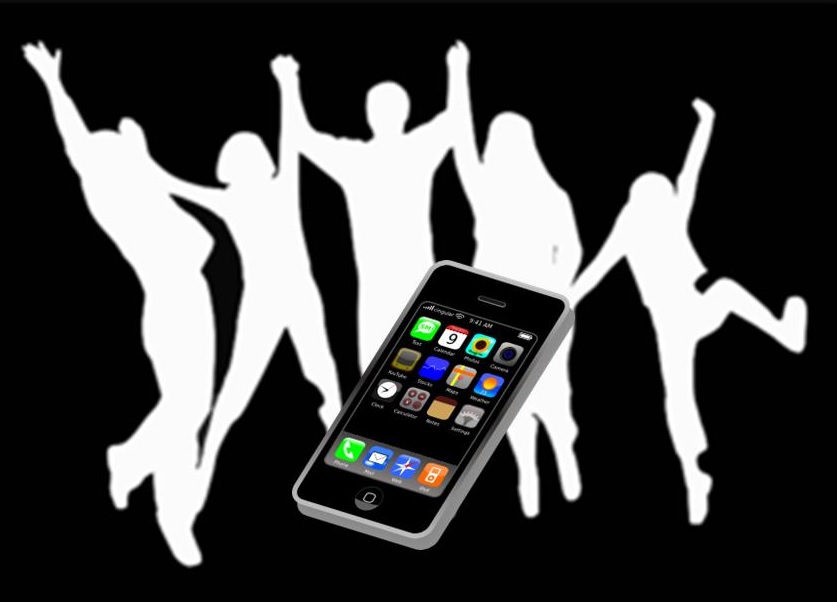The results of a new survey have just been released and have shown that people don’t necessarily go out to buy.
PriceGrabber has just released the results of a mobile commerce survey that they conducted on the topic of back to school and which has provided some insight into consumer behaviors for making that type of purchase.
The research examined everything from where parents look for deals and what experience they enjoy most.
For example, the Pricegrabber survey indicated that mobile commerce is playing a very important role in back to school shopping this year. Sixty seven percent of the shoppers who took part in the survey indicated that they checked prices online before heading out to buy. Moreover, another 47 percent receive discount coupons over their smartphones via text message. Another 47 percent read emails containing discount offers while they are in-store.
Forty two percent of the survey participants use mobile commerce to make a purchase.
 As fascinating and helpful as that mobile commerce data may be, there was one element of the survey that drew a larger amount of attention. There were 1,937 American shoppers who took part in this research by giving their opinions and sharing details regarding their shopping behaviors. What was interesting is that many of the smartphones and tablets were used from home either to make the purchase, or to research before heading out in the first place.
As fascinating and helpful as that mobile commerce data may be, there was one element of the survey that drew a larger amount of attention. There were 1,937 American shoppers who took part in this research by giving their opinions and sharing details regarding their shopping behaviors. What was interesting is that many of the smartphones and tablets were used from home either to make the purchase, or to research before heading out in the first place.
There is a large concern being expressed by owners of brick and mortar stores. This was that 46 percent of consumers with smartphones will use those shops as a “showroom”, so that they can see the product in real life, but then use mobile commerce to try to find a better price for the same product, somewhere else. This means that while they may window shop in store, they are actually buying while they’re online.
That said, the survey has indicated that those stores don’t need to worry about this threat from mobile commerce, as only 17 percent are actually using the devices while in store. This means that only a fraction of them are actually practicing showrooming and, among them, there is likely only to be an insignificant few who will find the product with a price and shipping total that will be low enough to make it worthwhile to wait to have it delivered instead of picking it up while they’re already there.
A recent analysis has shown that different groups of people prefer different applications.
Onavo Insights has just released some of the results from a data analysis that it conducted on the use of mobile commerce and payments apps, which has helped to show how some of these digital products are doing, and who uses them the most.
There are already hundreds of millions of smartphones owned by Americans, but only a small percentage are used for mobile commerce.
Even fewer are used for payments. Mobile commerce is still primarily used for price comparisons as opposed to actually using the apps to purchase products or pay for goods while in store. This, despite massive efforts from industry giants that range from Google to PayPal, as well as telecom joint ventures like Isis.
As hard as these companies have been trying, mobile commerce and payments have yet to take off as seen in other nations.
 According to the app usage data collected by Onavo Insights, from several million Android and iOS users, there are certain trends that are forming. The company published some of those findings in a report that has indicated that mobile commerce and payments apps and their platforms have been growing in the United States over the last twelve months, despite the fact that other countries – particularly in Asia – are seeing much larger growth levels.
According to the app usage data collected by Onavo Insights, from several million Android and iOS users, there are certain trends that are forming. The company published some of those findings in a report that has indicated that mobile commerce and payments apps and their platforms have been growing in the United States over the last twelve months, despite the fact that other countries – particularly in Asia – are seeing much larger growth levels.
Although the company does not claim that this provides a complete image of the mobile commerce situation in the country, it does help to provide a sense of how the apps are being used across the United States.
Among the notable findings about the mobile commerce apps includes the following:
• Starbucks is by far the clear leader when it comes to mobile commerce apps as it is used the most out of any payments app but it is also used for the free download of songs and apps, to locate shop locations and to view the menus at those cafes.
• As slow as the uptake may have been in the U.S., it is happening and millions of dollars in transactions are being completed through mobile payments apps. That said, among the estimated $500 million in transactions over mobile commerce apps last year in the United States, the “vast majority” occurred by way of the Starbucks offerings. This according to Berg Insights data.
• Venmo is starting to show a strong growth even though it remains a small product, as this mobile commerce app’s young audience doubled its use in June. Its primary use is in a much younger crowd, which is different from Starbucks and PayPal where the average age is 25 to 34.
• Men use mobile payments more as a whole, but the mobile commerce app at Starbucks was an exception, where women made up 54 percent of users. The lowest percentage of females was at Square Wallet, at 21 percent.
 As fascinating and helpful as that mobile commerce data may be, there was one element of the survey that drew a larger amount of attention. There were 1,937 American shoppers who took part in this research by giving their opinions and sharing details regarding their shopping behaviors. What was interesting is that many of the smartphones and tablets were used from home either to make the purchase, or to research before heading out in the first place.
As fascinating and helpful as that mobile commerce data may be, there was one element of the survey that drew a larger amount of attention. There were 1,937 American shoppers who took part in this research by giving their opinions and sharing details regarding their shopping behaviors. What was interesting is that many of the smartphones and tablets were used from home either to make the purchase, or to research before heading out in the first place.
 According to the app usage data collected by Onavo Insights, from several million Android and iOS users, there are certain trends that are forming. The company published some of those findings in a report that has indicated that mobile commerce and payments apps and their platforms have been growing in the United States over the last twelve months, despite the fact that other countries – particularly in Asia – are seeing much larger growth levels.
According to the app usage data collected by Onavo Insights, from several million Android and iOS users, there are certain trends that are forming. The company published some of those findings in a report that has indicated that mobile commerce and payments apps and their platforms have been growing in the United States over the last twelve months, despite the fact that other countries – particularly in Asia – are seeing much larger growth levels.